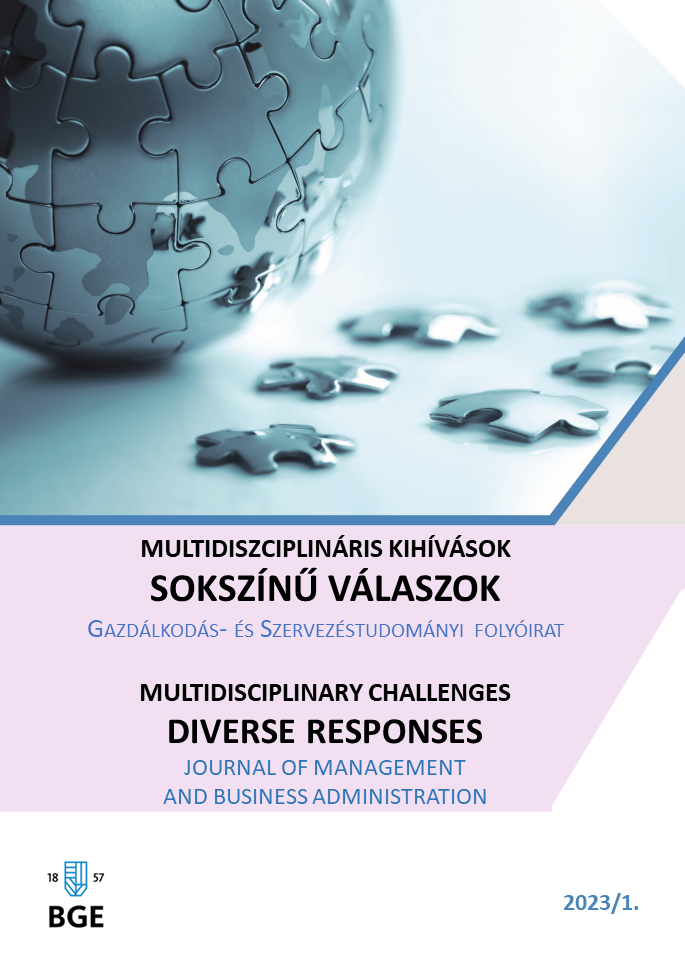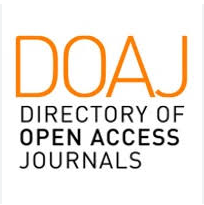Tanulmányok Kína gazdasági fejlődéséről a reform és nyitás óta - Irodalmi áttekintés
Absztrakt
Amióta Kína meghirdette a reform és nyitás alpolitikáját, a gazdasági fejlődés tekintetében kínai sajátosságokkal rendelkező szocialista gazdasági fejlődési utat hozott létre. Ebben az időszakban Kína gyors gazdasági növekedést tapasztalt, és ezzel párhuzamosan mélyen gyökerező konfliktusok kerültek előtérbe. Ezért Kínának át kell alakítania gazdasági fejlődésének irányát a még nagyobb gazdasági növekedés érdekében. Ebben a tanulmányban a szerző a szakirodalmi áttekintés módszerével tekinti át a Kína gazdasági fejlődésével kapcsolatos cikkeket (nemzetközi és hazai tudományos folyóiratok) 1949 és 2023 között, leírja Kína jelenlegi gazdasági fejlődését, és elemzi a Kína előtt álló lehetőségeket és kihívásokat a gazdasági fejlődés szempontjából. A kínai kormány a tudomány és technológia innovációvezérelt fejlesztésére összpontosít, és a kínai gazdaság gyors gazdasági növekedés helyett a kínai gazdaság magas színvonalú fejlesztését kívánja elérni. Ezért a szerző úgy véli, hogy Kína gazdasági fejlődésének jövőbeli iránya a kormányzati makrogazdasági politikai szabályozás felhasználásával a digitális gazdaság fejlődésének erőteljes előmozdítása mellett fog dönteni. Emellett a kormányzati hatóságok nagyobb figyelmet fognak fordítani a fenntartható fejlődésre.
Hivatkozások
Barboza, D., 2010. China passes Japan as second-largest economy. The New 1York Times, 15. https://picture.iczhiku.com/resource/paper/shiwaTFijSyAtNmc.pdf
Cai, K. G., 2018. The one belt one road and the Asian infrastructure investment bank: Beijing’s new strategy of geoeconomics and geopolitics. Journal of Contemporary China, 27(114), 831-847. https://doi.org/https://doi.org/10.1080/10670564.2018.1488101
Chan, J., Pun, N., & Selden, M., 2013. The politics of global production: A pple, F oxconn and C hina's new working class. New technology, work and employment, 28(2), 100-115. https://doi.org/https://doi.org/10.1111/ntwe.12008
Chen, J., Yin, X., & Mei, L., 2018. Holistic innovation: An emerging innovation paradigm. International Journal of Innovation Studies, 2(1), 1-13.
Chen, Y. Y., & Yuan, Y. J., 2007. The innovation strategy of firms: empirical evidence from the Chinese high‐tech industry. Journal of Technology Management in China, 2(2), 145-153. https://doi.org/10.1108/17468770710756095
Chin, G. T., & Dobson, H., 2015. China’s presidency of the G20 Hangzhou: On global leadership and strategy. Global Summitry, 1(2), 151-170. https://doi.org/10.1093/global/guw002
Dai, Z., Shen, X. H., & Guo, L., 2021. Technological innovation on economic growth from the perspective of investment-oriented environmental regulations: considering the threshold effect of China human capital. Applied Economics, 53(40), 4632-4645. https://doi.org/10.1080/00036846.2021.1904128
Dang, L., Li, X., & Shen, S., 2021. Manufacturing Digital Transformation and Its Export Technological Sophistication. International Trade Issues, 6, 32-47. http://journal.uibe.edu.cn/docs/2021-06/7b71dd6937d74f0c853f9eb642a1188e.pdf
Dou, X. S., 2017. Low carbon technology innovation, carbon emissions trading and relevant policy support for China’s low carbon economy development. International Journal of Energy Economics and Policy, 7(2), 172-184. https://dergipark.org.tr/en/pub/ijeeep/issue/31921/351194
Duan, H., Wang, S., & Yang, C., 2020. Coronavirus: limit short-term economic damage. Nature, 578(7796), 515-516.
Erdei-Késmárki-Gally, S. & Neszmély, G. I., 2017. Regional Development In The World: China’s Role In Africa. Romanian Review Of Regional Studies: Journal Of The Centre For Regional Geography 13(1), 13-26. https://rrrs.reviste.ubbcluj.ro/site/arhive/Artpdf/v13n12017/RRRS13120172.pdf
Fernandes, N., 2020. Economic effects of coronavirus outbreak (COVID-19) on the world economy.
Gao, P. Y., Du, C., Liu, X. H., Yuan, F. H., & Tang, D. D., 2019. The construction of a modern economic system in the context of high-quality development: A new framework. Economic Research Journal, 54(4), 4-17. https://kns.cnki.net/kcms/detail/11.1081.f.20190418.1551.002.html
Gao, W., Zhang, G., Zhang, G., Huang, F., Wu, D., Tao, S., & Wang, M., 2019. Original innovation of key technologies leading healthy development of smart agricultural[J]. Smart Agriculture, 1(1), 8-19. https://doi.org/10.12133/j.smartag.2019.1.1.201812-SA015
Gong, X.-L., Feng, Y.-K., Liu, J.-M., & Xiong, X., 2023. Study on international energy market and geopolitical risk contagion based on complex network. Resources Policy, 82, 103495.
Greeven, M., 2004. The evolution of high-technology in China after 1978: Towards technological entrepreneurship. Available at SSRN 636798. https://ssrn.com/abstract=636798
Griffiths, J., & Woodyatt, A., 2020. 780 million people in China are living under travel restrictions due to the coronavirus outbreak. CNN World.
Guan, J. C., Mok, C. K., Yam, R. C., Chin, K.-S., & Pun, K. F., 2006. Technology transfer and innovation performance: Evidence from Chinese firms. Technological Forecasting and Social Change, 73(6), 666-678. https://doi.org/10.1016/j.techfore.2005.05.009
Guan, X. L., Wei, H. K., g S. S., Dai, Q., & Su, H. J., 2018. Assessment on the urbanization strategy in China: Achievements, challenges and reflections. Habitat International, 71, 97-109. https://doi.org/10.1016/j.habitatint.2017.11.009
Hong, Y. X., 2022. To build the soul of the socialist political economy with Chinese characteristics. China Political Economy(ahead-of-print). https://doi.org/10.1108/CPE-05-2022-0007
Hong, Z., 2016. The EU Global Strategy after Brexit–A Chinese View. The International Spectator, 51(3), 52-54. https://doi.org/10.1080/03932729.2016.1217642
Hu, Y., Liu, Y., & Sun, H., 2020. Process and Factors of Urban Growth and Shrinkage: A Case Study of Mining Cities in Heilongjiang Province. Scientia Geographica Sinica, 40(9), 1450-1459.
Huang, J., 2008. On the Spiritual Connotation of the 3rd Plenary Session of the 11th Central Committee of CPC. Guangdong Polytechnic Normal University, 10, 78-81.
Jiang, Z., & Lin, B., 2012. China's energy demand and its characteristics in the industrialization and urbanization process. Energy Policy, 49, 608-615. https://doi.org/10.1016/j.enpol.2012.07.002
Jin, B., 2018. Study on the “High-Quality Development” Economics. China's Industrial Economy, 4(5), r18. http://cbimg.cnki.net/Editor/2018/0529/ggyy/0e49e892-b5dc-4868-b047-1cdf129feb8e.pdf
Jin, G., & Shen, K. R., 2019. Economic Development of New China in the Past 70 years. Evolution of Government Behavior and Change of Growth Momentum. Journal of Macro-Quality Research, 7(3), 1-16. https://doi.org/ 10.13948/j.cnki.hgzlyj.2019.03.001
Jin, P., Peng, C., & Song, M., 2019. Macroeconomic uncertainty, high-level innovation, and urban green development performance in China. China Economic Review, 55, 1-18.
Koudela, P., 2020. Global Budapest and Migration. Central European Political Science Review, 21(80), 121-139.
Kozák, T., Madleňak, R. & Neszmélyi, G. I., 2020. How The Lean Management Decision Influences The Transportation Cost In The Supply Chain? Communications - Scientific Letters of the University of Žilinathis 2020, 22(4), 13–19. https://doi.org/10.26552/com.C.2020.4.13-19
Kwan, C. H., 2020. The China–US trade war: Deep‐rooted causes, shifting focus and uncertain prospects. Asian Economic Policy Review, 15(1), 55-72. https://doi.org/10.1111/aepr.12284
Li, L., 2018. China's manufacturing locus in 2025: With a comparison of “Made-in-China 2025” and “Industry 4.0”. Technological Forecasting and Social Change, 135, 66-74.
Li, Q., 2020. Urbanization since 1949: history, current state and problems. China’s Development Under a Differential Urbanization Model, 1-19. https://doi.org/10.1007/978-981-13-9451-5_1
Li, S., Chen, J., & Teng, Y., 2021. Rural Revitalization on the Path of Common Prosperity: Problems, Challenges and Suggestions. Journal of Lanzhou University (Social Sciences), 49(3). http://www.swg.zju.edu.cn/_upload/article/files/a1/14/f2a758744027ad0933b6af88ab4c/4d58ca81-e7b2-401a-b34a-076a3de1d7e7.pdf
Li, Y., 2020. Exploring the Issue of "Vulnerability" and "Vulnerable Groups" in the Covid-19 Global Pandemic. International Political Studies, 41(3), 208-229. https://www.jis.pku.edu.cn/docs/2020-08/20200817134152895993.pdf
Li, Y., Sun, Z., & Accatino, F., 2021. Spatial distribution and driving factors determining local food and feed self‐sufficiency in the eastern regions of China. Food and Energy Security, 10(3), e296.
Lin, G. C., 2002. The growth and structural change of Chinese cities: a contextual and geographic analysis. Cities, 19(5), 299-316. https://doi.org/https://doi.org/10.1016/S0264-2751(02)00039-2
Liu, J. F., & Yang, Y. Q., 2009. From the Third Plenary Session of the 11th Central Committee of the CPC to the 17th: Evolution in heritance and transcend of China’s reform ideas. Journal of Jining University (2), 104-107.
Liu, S., Guo, L., Webb, H., Ya, X., & Chang, X., 2019. Internet of Things monitoring system of modern eco-agriculture based on cloud computing. IEEE Access, 7, 37050-37058.
Liu, T., & Sun, L., 2015. An apocalyptic vision of ageing in China. Zeitschrift für Gerontologie und Geriatrie, 48(4).
Lu, M. (2022). Ecological Risk of Capital Globalization and Its Avoidance. Journal of Zhejiang Gongshang University. http://marx.zucc.edu.cn/uploadfile/file/20230216/1676513166421452.pdf
Lu, M., & Xia, Y. R., 2016. Migration in the People's Republic of China. ADBI Working Paper 593. https://ssrn.com/abstract=2838116 or http://dx.doi.org/10.2139/ssrn.2838116
Lu, Y., 2017. The impact of export technological sophistication on total factor productivity: a cross-country empirical study. Economist, 4(4), 51-58.
Lu, Y. L., Song, S., Wang, R. S., Liu, Z. Y., Meng, J., Sweetman, A. J., Jenkins, A., Ferrier, R. C., Li, H., & Luo, W., 2015. Impacts of soil and water pollution on food safety and health risks in China. Environment international, 77, 5-15. https://doi.org/10.1016/j.envint.2014.12.010
Marinelli, M., 2018. How to build a ‘Beautiful China’in the Anthropocene. The political discourse and the intellectual debate on ecological civilization. Journal of Chinese Political Science, 23(3), 365-386. https://doi.org/10.1007/s11366-018-9538-7
May, B., 2020. World economic prospects monthly. Econ. Outlook, 44, 1-33.
McKibbin, W., & Fernando, R., 2021. The global macroeconomic impacts of COVID-19: Seven scenarios. Asian Economic Papers, 20(2), 1-30.
Neszmélyi, G. I., 2001. The Prospectives of the Economic Cooperation between Hungary and the Republic of Korea Focusing on the Food and Agricultural Sector. (2001) East European Studies ISSN 1229-442x 10 1 237-253, 1927308
Ploberger, C., 2016. China’s reform and opening process: a new model of political economy? Journal of Chinese Economic and Business Studies, 14(1), 69-87. https://doi.org/10.1080/14765284.2015.1132933
Qian, Y. Y., 2000. The process of China's market transition (1978-1998): The evolutionary, historical, and comparative perspectives. Journal of Institutional and Theoretical Economics (JITE)/Zeitschrift für die gesamte Staatswissenschaft, 151-171. https://doi.org/http://www.jstor.org/stable/40752194
Shen, K. R., & Ten, Y. L., 2013. China's economic growth under "structural" deceleration. The Economist, 8(8), 29-38.
Sheng, H., & Zhao, N., 2013. China's state-owned enterprises: Nature, performance and reform (Vol. 1). World Scientific.
Sun, Y., Liu, N., Shang, J., & Zhang, J., 2017. Sustainable utilization of water resources in China: A system dynamics model. Journal of cleaner production, 142, 613-625.
Tankersley, J. & Bradsher, K., 2018. Trump hits China with tariffs on $200 billion in goods, escalating trade war. The New York Times, 17.
Tarrósy, I., 2008. Sino-afrikai kapcsolatok a világpolitika rendszerében. Kölcsönös hasznok és lehetőségek a 21. században [The Sino-African Relations within the World Political System. Mutual Benefits and Opportunities for the 21st Century?], Külügyi Szemle (Foreign Policy Review), No. 4, 81-93. http://real.mtak.hu/14221/1/KSZ_2008_04_081_Tarrosy.pdf
Thanh, P. S., 2017. The 19th National Congress of the Communist Party of China: Preparation for a New Era.
Tu, S., Long, H., Zhang, Y., Ge, D., & Qu, Y., 2018. Rural restructuring at village level under rapid urbanization in metropolitan suburbs of China and its implications for innovations in land use policy. Habitat International, 77, 143-152. https://doi.org/10.1016/j.habitatint.2017.12.001
Vogel, E. F., 2011. Deng Xiaoping and the transformation of China (Vol. 10). Belknap Press of Harvard University Press Cambridge, MA.
Walder, A. G., 1995. Local governments as industrial firms: an organizational analysis of China's transitional economy. American Journal of sociology, 101(2), 263-301. https://doi.org/10.1086/230725
Wang, D., Hu, B., Hu, C., Zhu, F., Liu, X., Zhang, J., Wang, B., Xiang, H., Cheng, Z., & Xiong, Y., 2020. Clinical characteristics of 138 hospitalized patients with 2019 novel coronavirus–infected pneumonia in Wuhan, China. jama, 323(11), 1061-1069.
Wang, L., 2021. Policies and Practices in China’s High-Quality Development of Logistics. Contemporary Logistics in China: Systemic Reconfiguration and Technological Progression, 177-198. https://doi.org/10.1007/978-981-16-5580-7_8
Wang, Y., & Shi, G., 2021. “Post Poverty Alleviation Era” under the Framework of Targeted Poverty Alleviation: Research on the Prevention and Control of Urban Relative Poverty in China. Contemporary Economic Management.
WTO., 2020. Considerations for quarantine of individuals in the context of containment for coronavirus disease (COVID-19).[Internet] Geneva: WHO; 2020 [cited Apr 18, 2020]. In.
Xie, F. S., Gao, L., & Xie, P. Y., 2019. Supply-side structural reforms from the perspective of global production networks - theoretical logic and empirical evidence based on political economy Management World (11), 89-101.
Xu, F., 2018. The belt and road: The global strategy of China high-speed railway. Springer.
Xu, J., & Ge, X., 2017. Research on the Problems and Countermeasures of High-end Manufacturing Industry in China. 2017 International Conference on Economic Development and Education Management (ICEDEM 2017),
Xu, J. H., 2012. Turning the foothold of development to improving quality and efficiency - A sidebar to the collective interview on "implementing innovation-driven strategy and accelerating the pace of transformation and development" at the 18th National Congress. China Brand and Anti-counterfeiting (12), 14-15.
Yam, R. C., Guan, J. C., Pun, K. F., & Tang, E. P., 2004. An audit of technological innovation capabilities in Chinese firms: some empirical findings in Beijing, China. Research policy, 33(8), 1123-1140. https://doi.org/10.1016/j.respol.2004.05.004
Yang, X., & Yan, J., 2018. Top-level design, reform pressures, and local adaptations: an interpretation of the trajectory of reform since the 18th CPC Party Congress. Journal of Chinese Governance, 3(1), 25-48.
Yang, X. N., & Liu, M. Y., 2019. The Thought of Sustainable Development in the Strategy of Revitalization in the New Era. 2019 4th International Conference on Social Sciences and Economic Development (ICSSED 2019)
Ye, X., 2018. (2018). Outline of China's Rural Revitalization Strategy in the New Era]. Reformation, 1, 65-73.
Yeh, K., 2021. Economic Risks in P.R. China: A Fiscal Perspective. Mainland China Studies, 64(3), 1-47. https://homepage.ntu.edu.tw/~kuochunyeh/KCYEH(MCS).pdf
Yu, C. Q., Huang, X., Chen, H., Godfray, H. C. J., Wright, J. S., Hall, J. W., Gong, P., Ni, S. Q., Qiao, S. C., & Huang, G. R., 2019. Managing nitrogen to restore water quality in China. Nature, 567(7749), 516-520. https://doi.org/10.1038/s41586-019-1001-1
Yu, D. F., & Zhang, Y. J., 2015. China’s industrial transformation and the ‘new normal’. Third World Quarterly, 36(11), 2075-2097. https://doi.org/10.1080/01436597.2015.1077682
Zhang, M., Liu, X. X., & Ding, Y. T., 2021. Assessing the influence of urban transportation infrastructure construction on haze pollution in China: A case study of Beijing-Tianjin-Hebei region. Environmental Impact Assessment Review, 87, 106547. https://doi.org/10.1016/j.eiar.2020.106547
Zhang, Y. J., & Idris, S., 2021. Research On the Upgrading Path of China's Manufacturing Industry from The Perspective of Global Value Chainzhang. Journal of Technology and Operations Management, 16(2), 34-44. https://doi.org/10.32890/jtom2021.16.2.4
Zhang, Z., & Chen, Y., 2020. Building scientific and technological innovation system of adaptive to economic and social development trend. Bulletin of Chinese Academy of Sciences (Chinese Version), 35(5), 534-544.
Zhao, L., 2023. Global Value Chains in the Post-pandemic Era. In Modern China and International Rules: Reconstruction and Innovation (pp. 13-40). Springer.
Zheng, F. H., & Wang, Y. B., 2018. The Transformation of Kinetic Energy in the New Era: the Priority of Quality and Benefit. Journal of South China University of Technology (Social Science Edition), 20(2), 39-47. https://doi.org/10.19366/j.cnki.1009-055X.2018.02.005
Zhong, Z., & Liu, Y., 2021. How Can Data as a Production Factor Empower Agricultural Modernization? Instruction and Research, 55(12), 53.
Zhu, F., Zhang, F. R., & Ke, X. L., 2018. Rural industrial restructuring in China’s metropolitan suburbs: Evidence from the land use transition of rural enterprises in suburban Beijing. Land Use Policy, 74, 121-129. https://doi.org/10.1016/j.landusepol.2017.09.004
Zhu, G., & Ngok, K., 2007. Marketization, globalization and administrative reform in China: A zigzag road to a promising future. Revue Internationale des Sciences Administratives, 73(2), 239-257.
Zhu, J. M., 1999. Local growth coalition: the context and implications of China’s gradualist urban land reforms. International journal of urban and regional research, 23(3), 534-548. https://doi.org/10.1111/1468-2427.00211
Zhu, S. J., & Pickles, J., 2014. Bring in, go up, go west, go out: Upgrading, regionalisation and delocalisation in China’s apparel production networks. Journal of Contemporary Asia, 44(1), 36-63. https://doi.org/10.1080/00472336.2013.801166


























